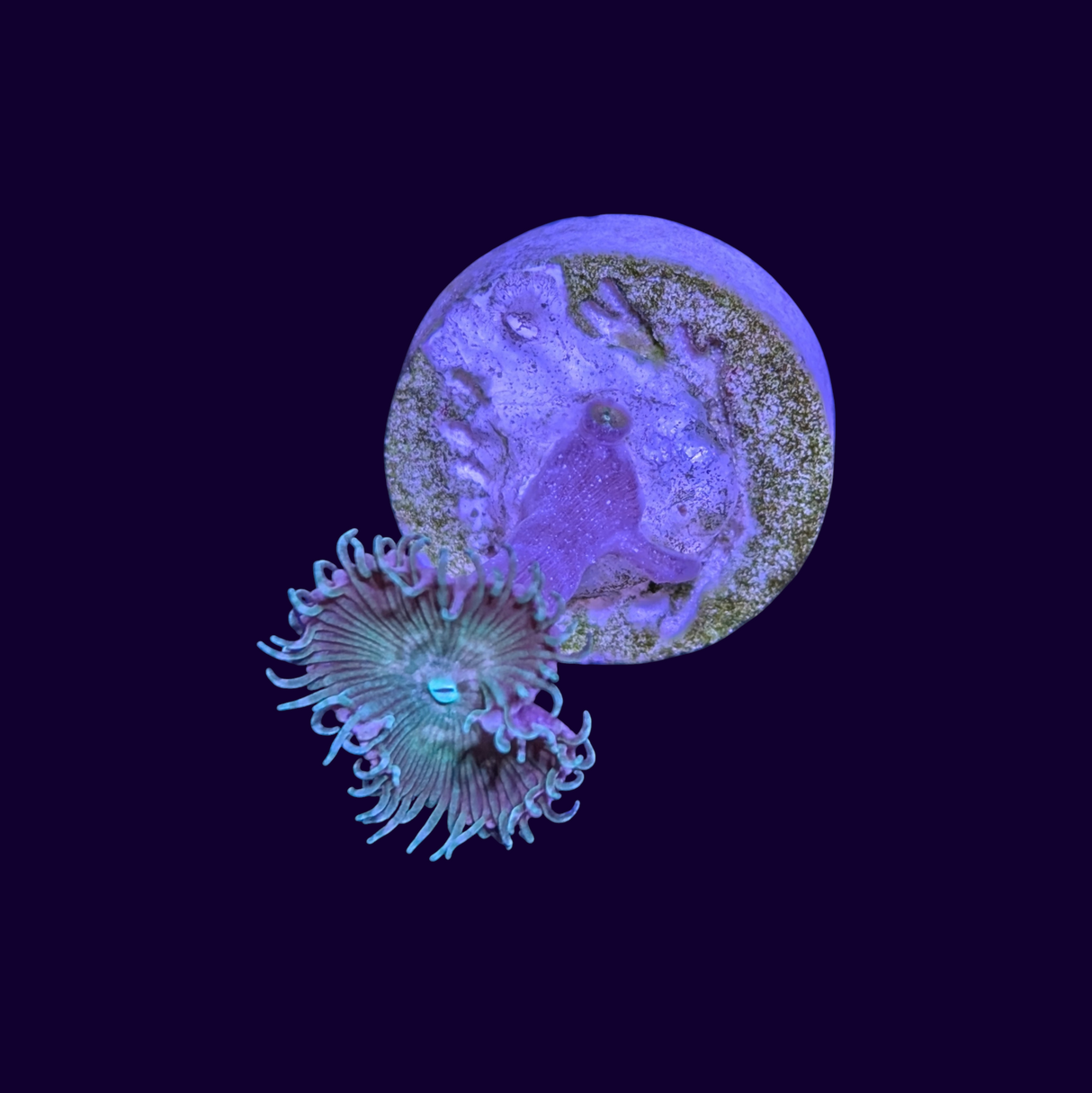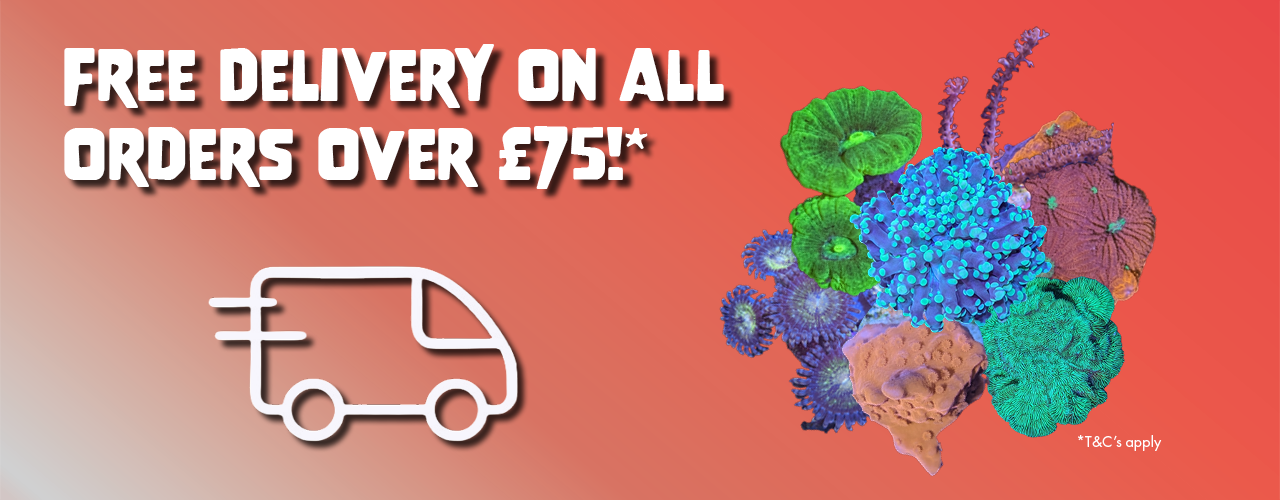Paly Frag
Paly Frag is backordered and will ship as soon as it is back in stock.
Couldn't load pickup availability
Description
Description
Type: Paly
Name: Paly
Size:
Fixing: 100mm disc
NOTE: Palys contain palytoxin so take care when handling these corals
Coral Care Guide for Paly Coral
Welcome to the world of Paly Coral! Below is a detailed care guide to help you provide the best environment for your new coral addition and ensure it thrives in your reef tank.
Overview:
- Scientific Name: Zoanthid species (commonly referred to as Palythoa or "Paly Coral")
- Difficulty Level: Easy to Moderate
- Growth Pattern: Colonial, with polyps spreading across available surfaces.
- Lighting: Moderate to High
- Flow: Low to Moderate
Ideal Tank Conditions:
-
Tank Size:
- Minimum recommended size: 10 gallons (nano tanks are suitable due to their size and adaptability).
-
Water Parameters:
- Temperature: 76–80°F (24–27°C)
- pH: 8.1–8.4
- Salinity: 1.023–1.025 specific gravity
- Alkalinity: 8–12 dKH
- Calcium: 400–450 ppm
- Magnesium: 1200–1400 ppm
-
Lighting Requirements:
- Moderate to high lighting levels (50-150 PAR). Use LED, T5, or metal halide lights for best results.
- Place them in areas with indirect light if new to your tank, and gradually acclimate them to brighter lighting.
-
Water Flow:
- Ensure gentle, variable water movement. This prevents detritus buildup while allowing the polyps to sway naturally without stress.
Placement and Compatibility:
-
Placement in Tank:
- Start on the bottom of your tank or in a low-light area and gradually move them to their preferred lighting zone.
- They grow well on live rock or coral rubble and will spread over time.
-
Compatibility:
- Friendly with most reef-safe fish, invertebrates, and other soft corals.
- Avoid aggressive corals that may sting or overshadow them.
Feeding:
-
Diet:
- Paly Corals are photosynthetic, relying on their symbiotic zooxanthellae algae for nutrition.
- Supplement their diet with occasional feedings of reef-safe foods like:
- Phytoplankton
- Zooplankton
- Liquid coral foods
-
Feeding Frequency:
- Once or twice a week during evening hours when polyps are most extended.
Maintenance and Growth:
- Regular water changes (10-20% weekly) to maintain water quality.
- Trim or frag colonies if they begin to overgrow or encroach on other corals.
- Watch for algae or pests such as nudibranchs, flatworms, or bristleworms. Use dips or treatments if necessary.
Safety Note:
-
Palytoxin Warning:
- Paly Corals can produce a toxin called palytoxin, which is harmful if inhaled or touched.
- Always wear gloves and protective eyewear when handling or fragging these corals.
- Avoid boiling live rock or coral that may contain palytoxin to prevent harmful fumes.
With the right care, Paly Corals can be a vibrant and rewarding addition to your reef tank, showcasing their colourful, waving polyps and ease of growth. Whether you're a beginner or an experienced aquarist, these hardy corals will add life and beauty to your underwater ecosystem.
Payment & Security
Payment methods
Your payment information is processed securely. We do not store credit card details nor have access to your credit card information.





